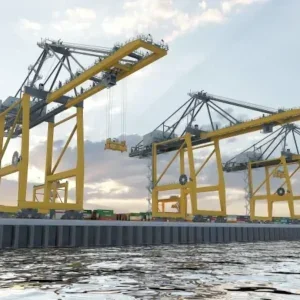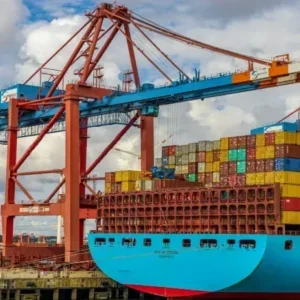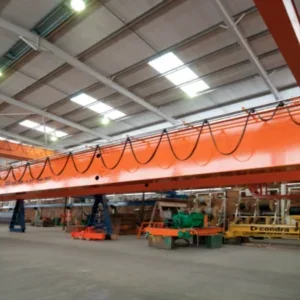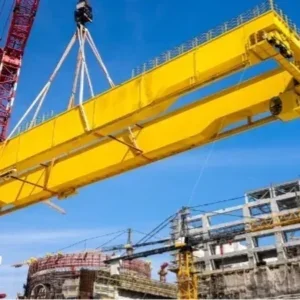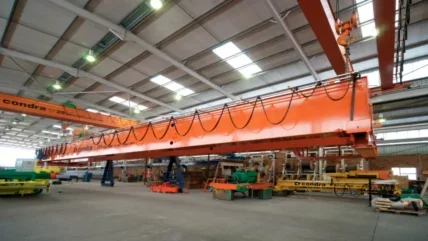
The overhead lifting equipment and material handling industry is increasingly facing challenges posed by extreme weather events. These events, intensified by climate change, can lead to significant disruptions, safety concerns, and financial losses. This article explores the impact of extreme weather on the industry, examining its effects on operations, supply chains, and safety. We will also provide strategies for mitigating these impacts and ensuring resilience in the face of climatic uncertainties.
Understanding extreme weather events
Defining extreme weather events
Extreme weather events refer to unusual, severe, or unseasonal weather conditions that can cause significant damage and disruption. These include hurricanes, tornadoes, floods, heat waves, and heavy snowstorms. Such events have become more frequent and intense due to climate change, posing substantial risks to various industries, including overhead lifting and material handling.
Causes and trends
The primary cause of the increase in extreme weather events is global climate change, driven by factors such as:
- Greenhouse Gas Emissions: The burning of fossil fuels increases the concentration of greenhouse gases in the atmosphere, leading to global warming.
- Deforestation: The reduction of forested areas exacerbates climate change by decreasing carbon sequestration.
- Urbanisation: Rapid urbanisation changes land use patterns, affecting local climates and increasing vulnerability to extreme weather.
Impact on the overhead lifting equipment and material handling industry
Operational disruptions
Extreme weather events can severely disrupt operations in the overhead lifting equipment and material handling industry:
- Equipment Damage: Heavy rain, flooding, and high winds can damage cranes, forklifts, and other material handling equipment, leading to costly repairs and downtime.
- Worksite Shutdowns: Severe weather can force the closure of construction sites, warehouses, and manufacturing facilities, halting operations and delaying projects.
- Transportation Issues: Flooded roads, disrupted railways, and closed ports can impede the transportation of goods, affecting supply chain continuity.
Supply chain vulnerabilities
The industry’s reliance on a global supply chain makes it particularly susceptible to the impacts of extreme weather:
- Supplier Disruptions: Weather events in key manufacturing regions can disrupt the production and supply of critical components and materials.
- Logistics Challenges: Extreme weather can lead to logistical bottlenecks, such as delayed shipments and increased transportation costs.
- Inventory Management: Fluctuating supply chain reliability can complicate inventory management, leading to either shortages or overstocking.
Safety concerns
Safety is paramount in the overhead lifting and material handling industry, and extreme weather events heighten safety risks:
- Operational Hazards: High winds and heavy rain can create hazardous working conditions, increasing the risk of accidents and injuries.
- Structural Integrity: Flooding and severe storms can compromise the structural integrity of cranes, hoists, and storage facilities, posing significant safety risks.
- Heat Stress: Prolonged heatwaves can lead to heat stress and related health issues for workers, necessitating additional safety measures.
Strategies for mitigating the impact of extreme weather
Enhancing resilience through planning
Effective planning is crucial for mitigating the impact of extreme weather events:
- Risk Assessment: Conduct thorough risk assessments to identify vulnerabilities and potential impacts of extreme weather on operations and supply chains.
- Emergency Preparedness: Develop and regularly update emergency preparedness plans, including evacuation procedures, communication protocols, and resource allocation.
- Business Continuity Plans: Establish business continuity plans that outline steps to maintain operations during and after extreme weather events.
Investing in robust infrastructure
Investing in resilient infrastructure can help mitigate the effects of extreme weather:
- Weather-Resistant Equipment: Choose equipment designed to withstand extreme weather conditions, such as corrosion-resistant materials and reinforced structures.
- Protective Measures: Implement protective measures such as windbreaks, drainage systems, and reinforced storage facilities to safeguard equipment and materials.
- Technology Integration: Use advanced technologies like IoT sensors and predictive analytics to monitor weather conditions and optimise equipment performance.
Strengthening supply chain resilience
Building a resilient supply chain is essential to weathering extreme weather disruptions:
- Supplier Diversification: Diversify suppliers geographically to reduce reliance on any single region prone to extreme weather.
- Inventory Buffering: Maintain strategic inventory buffers of critical components to cushion against supply chain disruptions.
- Collaboration and Communication: Foster strong relationships and communication channels with suppliers and logistics providers to ensure timely updates and coordinated responses.
Prioritising worker safety
Ensuring worker safety during extreme weather events is a critical concern:
- Training Programmes: Implement training programmes focused on safety procedures during extreme weather conditions.
- Protective Gear: Provide appropriate protective gear and equipment to safeguard workers against weather-related hazards.
- Work Schedule Adjustments: Adjust work schedules to avoid peak weather conditions, such as extreme heat or severe storms, and ensure adequate rest breaks.
Case studies: industry responses to extreme weather
Case study 1: flood-resilient operations
A major port facility in Southeast Asia faced recurrent flooding, disrupting its material handling operations. In response, the facility invested in advanced drainage systems, elevated storage areas, and weather-resistant equipment. These measures significantly reduced downtime and damage during subsequent floods, ensuring smoother operations.
Case study 2: hurricane preparedness
A construction company operating in the Gulf of Mexico region developed a comprehensive hurricane preparedness plan. This included pre-storm equipment checks, securing loose materials, and establishing clear evacuation routes. During a recent hurricane, the company’s proactive measures minimised damage and enabled a swift resumption of activities post-storm.
Case study 3: heatwave adaptation
A logistics firm in Southern Europe adapted to increasing heatwaves by installing cooling systems in its warehouses and providing heat stress training for its workers. These measures helped maintain productivity and worker safety during extreme heat periods, reducing the incidence of heat-related illnesses.
The future of the industry in the face of climate change
Embracing sustainable practices
Sustainable practices can mitigate the long-term impacts of climate change and extreme weather:
- Green Technologies: Invest in green technologies, such as electric-powered equipment and renewable energy sources, to reduce the industry’s carbon footprint.
- Energy Efficiency: Implement energy-efficient practices in operations and logistics to reduce environmental impact and enhance resilience.
- Sustainable Materials: Use sustainable and locally sourced materials to minimise supply chain vulnerabilities and environmental degradation.
Leveraging technology for adaptation
Advanced technologies offer significant potential for adapting to extreme weather:
- Predictive Analytics: Utilise predictive analytics to forecast weather events and prepare accordingly, optimising operations and reducing risks.
- Remote Monitoring: Implement remote monitoring systems to oversee equipment and facility conditions in real-time, allowing for swift response to emerging threats.
- Automation: Increase automation in operations to reduce human exposure to hazardous conditions and maintain productivity during extreme weather.
Policy and regulation adaptation
Adapting to evolving policies and regulations is crucial for long-term resilience:
- Compliance: Ensure compliance with local and international regulations related to climate change and extreme weather preparedness.
- Advocacy: Engage in advocacy efforts to influence policy developments that support industry resilience and sustainable practices.
- Collaboration: Collaborate with regulatory bodies and industry associations to share knowledge and develop best practices for weather resilience.
Conclusion
Extreme weather events present significant challenges to the overhead lifting equipment and material handling industry. However, by enhancing resilience through robust planning, infrastructure investment, supply chain diversification, and prioritising worker safety, industry players can effectively navigate these challenges. Embracing sustainable practices, leveraging advanced technologies, and adapting to regulatory changes will ensure the industry’s long-term resilience and success in the face of climate change. As extreme weather events become more frequent and severe, proactive strategies and adaptive measures will be essential for sustaining growth and maintaining operational integrity.


